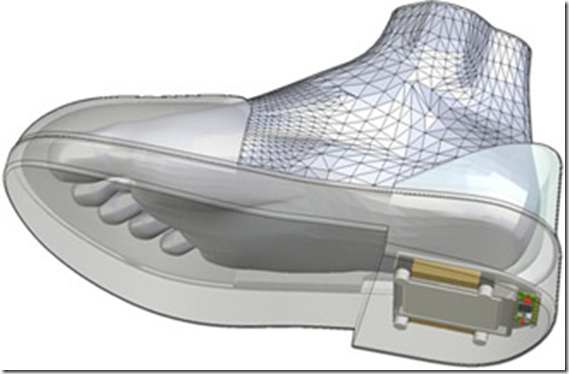Source: gtxcorp.com
The term “track,” as it pertains to shoes, is no longer only associated with a “track and field” competition. The new trend in the shoe market is shoes that use a global positioning system (GPS) located in the heel of the shoe to actually track the location of a person. Originally developed for serious runners and misplaced children, these GPS shoes have found a promising market with seniors who have Alzheimer’s disease and other forms of dementia.
Of the 5.3 million Americans who endure Alzheimer’s, about 60 percent of seniors with Alzheimer’s will wander off at some point during their illness and 70 percent will wander more than one time. This behavior puts the senior’s safety and health at risk and gives families reason for concern. The senior may become dehydrated, could fall or may become seriously injured. Families and caregivers are in a challenging position when their senior loved one is a wanderer. A tool such as the GPS shoes can make caring for that loved one more manageable.
Seniors who wear the GPS-enhanced shoe can continue with their normal activities. While most GPS shoes resemble sneaker-style footwear for comfort and exercise, shoemakers are introducing new styles all the time. For instance, California based GTX Group is now making loafers and sandals to accommodate all walks of life.
The GPS technology is so small that it unnoticeably fits into the heel of the shoe. To work, the shoe’s GPS technology couples with a downloadable app for a computer and/or smart phone, or the device connects with a tracking service for a monthly fee.
Families of people with Alzheimer’s can easily track where their loved one is at at any given moment. A pre-set “safe zone” or “geo-fence” can be set on the app or with the tracking service. If the person wearing the GPS shoes meanders out of that area, the app sounds an alert or the tracking service sends a text message. Families or caregivers can locate the senior immediately and bring them back to a safe setting.
The GTX GPS Smart Shoe retails for more than $300 retail, and this high-tech footwear is available for purchase through Aetrex Worldwide, a company that specializes in pedorthic footwear, designed for optimal comfort.
“The GPS Shoe has the potential to be life-saving as well as life-changing technology for those afflicted and their caregivers,” said Andrew Carle, director of George Mason University’s Program in Senior Housing Administration and advisor to GTX Group. “The shoes also hold the potential to save governments hundreds of millions of dollars in search and rescue operations, as well as in health care costs for those otherwise injured.”
After Bill Johnston, an 83-year-old Alzheimer’s patient, had a wandering indicent, his family knew they needed to do something different before Bill was hurt.
“I had been leaving him at a McDonald’s and going to the grocery store nearby. I would say to him, ‘Ok, go in, drink your tea and wait for me, and I will come back.’ And he would do that,” Joan, Bill’s wife, explained. “But one time I spent a little longer in the grocery store and got back maybe 45 minutes later and I looked in McDonald’s and he wasn’t there. I opened the bathroom door and hollered ‘Bill,’ and no answer.”
Joan recalled, “I was looking all around the parking lots and the shopping center, across the street from McDonald’s I saw him. He was headed toward a major highway. He couldn’t remember when I would be back. When I wasn’t there, he said to himself, ‘Well where is she? I’ll just walk home.”
Seeking ways to control Bill’s wandering, Joan and her son, Alan, were led to George Mason University and Andrew Carle. Carle offered the Johnston’s a pair of GPS shoes to test.
Joan said the shoes gave her peace of mind. “When I lost him, you, you kind of panic.” she said.
“We discussed it, and we decided to try these shoes out on him.” said Alan, who takes care of the technological side of the GPS for his parents. “And we thought this would be a good match and kind of went from there.” “The shoes give you more control,” Alan Johnston said. “My mom can call me anytime, and I can give her immediate feedback on his location.”
Joan and Alan hope the GPS shoes will make life easier for them and safer for Bill.
About the development of the shoe, Carle said, “We’re trying to maximize the odds that wanderers are going to have this technology on them, and the best location is to put it in shoes.”
Other tracking devices include watches or bracelets with a GPS inside. However, it is easier for a person to forget to put those devices on before leaving the house. Shoes are more of a necessity, and most people don’t forget to slide their shoes on before going somewhere. This increases the chances that a person who wanders would be wearing the GPS device and therefore would be locatable.
The GPS technology in a pair of shoes can help bring peace of mind to families and caregivers while assuring a safer environment for seniors suffering from wandering behaviors.

